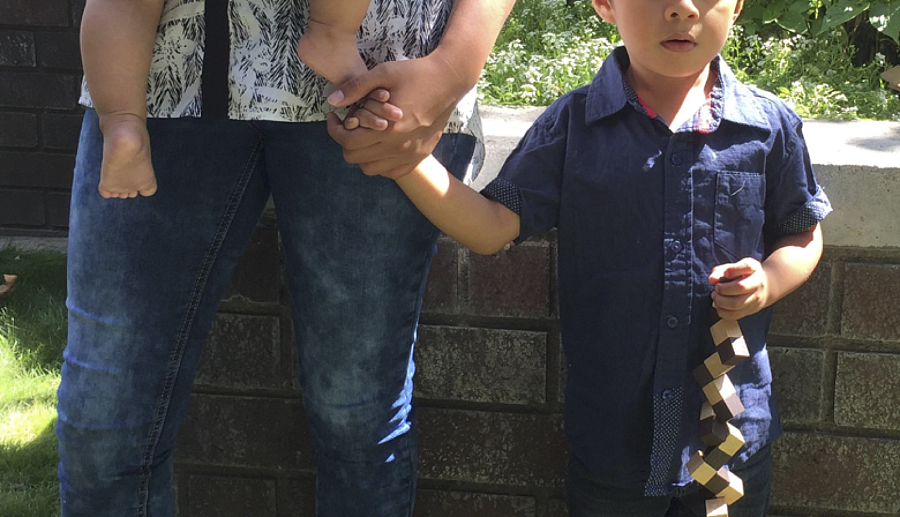Telling the story of unaccompanied minors’ overlooked needs in Los Angeles

The rampant violence and poverty in Central America in 2014 brought nearly 70,000 unaccompanied minors to the U.S., a large jump from the 38,000 in 2013 and 24,000 the year prior. The children that came with stories of gang violence and dangerous journeys crossing the border received a lot of media attention, and public dialogue peaked when reports of human rights abuses in detention centers and the government’s refusal to offer unaccompanied minors legal representation were made public.
Since then, there has been little media coverage of unaccompanied minors, although the migration continues in large numbers and the children adjusting to life in the U.S. remain as vulnerable, as many of their basic needs go unmet. Through two separate stories, I aimed to highlight the barriers such minors in Los Angeles County face when accessing mental health and pregnancy-related services. I focused on L.A. County since it has the largest number of unaccompanied minors that have been released to sponsors.
Unaccompanied minors pass through the custody of ICE and the Health and Human Services’ Office of Refugee Resettlement (ORR) before being released to their sponsors, who are tasked with providing medical and mental health services to unaccompanied minors in their care. Once the children are released to their sponsors, the ORR is required to provide services to children with mental health needs or who have been victims of physical or sexual abuse. ICE and the ORR, like many public institutions, were unprepared for the sudden influx of the unaccompanied minors and, according to a report released earlier this year by the Government Accountability Office (GAO), the lack of oversight left many children without the services that would have ensured that they received the medical and mental health care they needed.
When I spoke to immigrant rights organizations throughout Los Angeles County, they all echoed the problems outlined in the GAO report. Many children were coming into their offices with mental health needs that hadn’t been met, let alone identified. There were pregnant unaccompanied minors that weren’t aware of the services available to them.
It was difficult to get numbers that reflected these issues because the needs of these children had not been identified or recorded by the public agencies or medical institutions that had served them. A spokesperson with the ORR was able to give me the number of pregnant unaccompanied minors in ORR care each year from 2014-2016, but there were no data available for the number of pregnant unaccompanied minors that were placed with sponsors in L.A. County. All the mental health providers I spoke to for the story said the only data they received from the ORR was the number of unaccompanied minors placed with sponsors in L.A. county. The providers said they knew many unaccompanied minors needed therapy because of the traumatic experiences they faced, but the only way to reach them was through immigration attorneys and extensive outreach.
I found many nonprofit mental health and legal service providers had forged partnerships to connect unaccompanied minors to mental health services to make up for the lack of action by policy makers. Once the children were released to sponsors, many minors were seeking legal representation. When children started speaking to their attorneys of the traumas they faced for their asylum claims, lawyers started referring the children to mental health providers.
In 2015, the Los Angeles County Department of Mental Health used $1.7 million in California Mental Health Services Act dollars to fund 13 different agencies throughout the county, including LAUSD, to provide mental health services free of charge to unaccompanied minors through June 2017.
While getting numbers was tough, finding unaccompanied minors to interview was harder. Unaccompanied minors, like most undocumented immigrants, are apprehensive when it comes to speaking to the media about their citizenship status. I spent over a month for each story reaching out to immigrant advocacy organizations and attorneys that who might be able to put me in touch with unaccompanied minors. Some minors didn’t want to be interviewed, since they didn’t want to relive traumatic experiences, or they felt vulnerable in a foreign country. If their asylum cases were still open, they may have feared it could jeopardize their prospects.
Although my stories told the separate stories of two unaccompanied minors, I interviewed a total of four young men and women. As a reporter writing a feature story, I needed to get detailed accounts of their experiences and it became evident they were not comfortable telling me everything. As a reporter I did not want to re-traumatize my sources or force them to relive traumatic moments if they did not want to.
When it comes to finding sources for stories like these, I realized that persistence is key. Some young men and women were more ready to talk than others. After a few interviews, I was able to get in touch with people who were ready to share their stories.
Reaching out to case managers and lawyers that work with unaccompanied minors helped me connect with my sources because they are the closest to this population. It was particularly difficult trying to connect with a pregnant unaccompanied minor for the story, but I did eventually get in touch with a lawyer who, after explaining to her client that her story might help other women going through the same thing, she agreed to be interviewed.
When we were nearing the end of the interview, I asked the young woman if she had any final thoughts. She said that for any immigrant women going through the same struggle or are considering migrating for their child, know that it is a sacrifice, but one that is worth it.
Read Lucy Guanuna’s fellowship stories here.
Photo courtesy of Lucy Guanuna.
